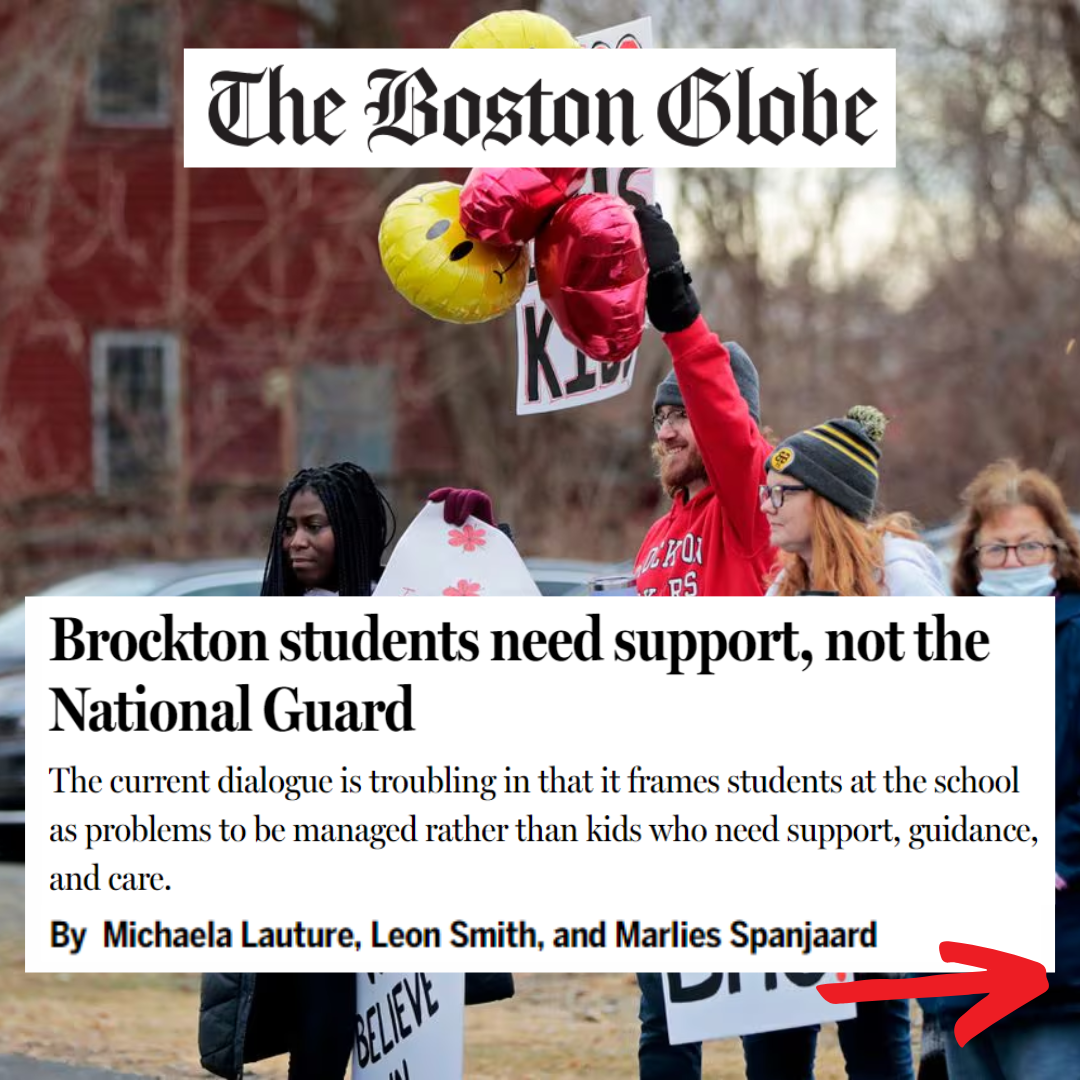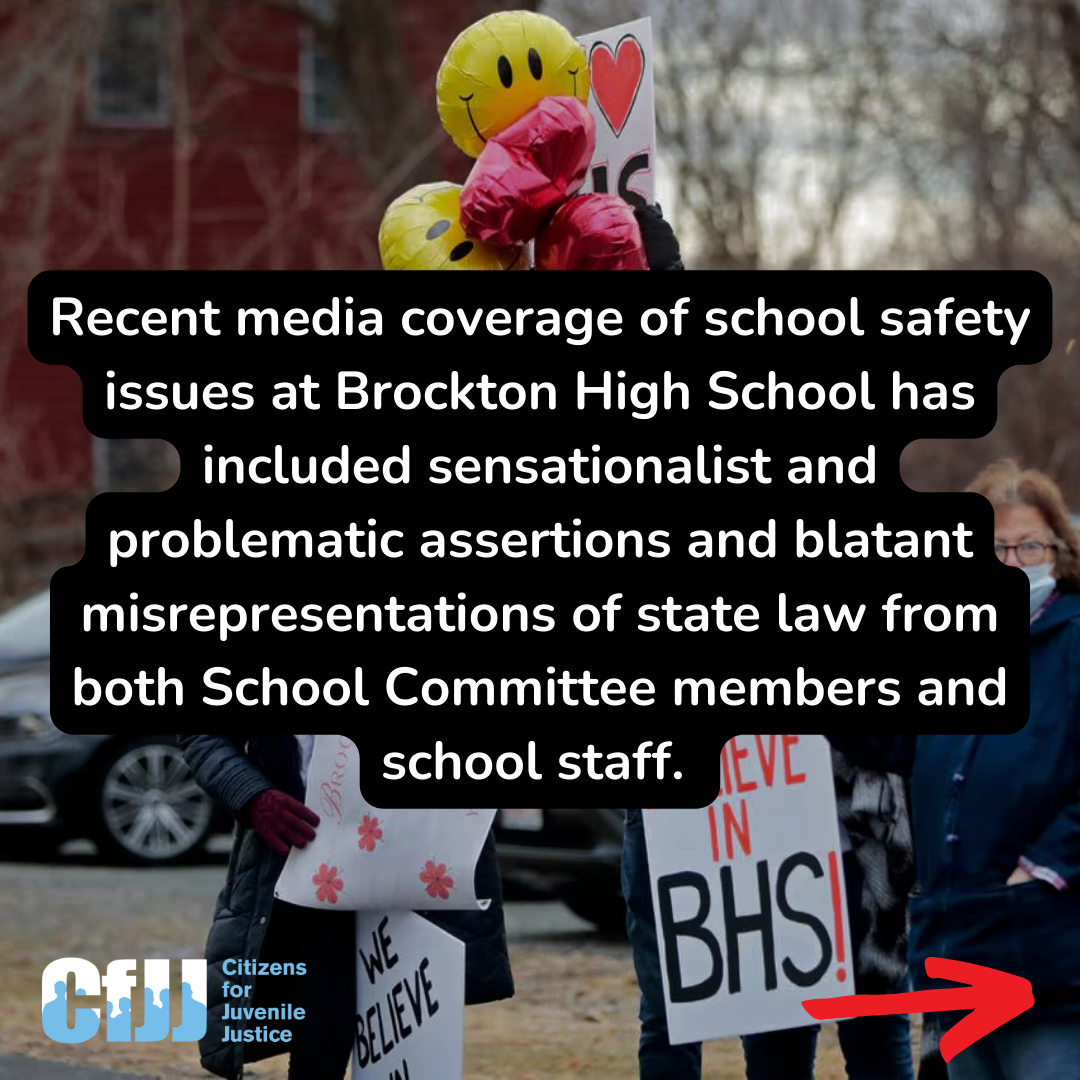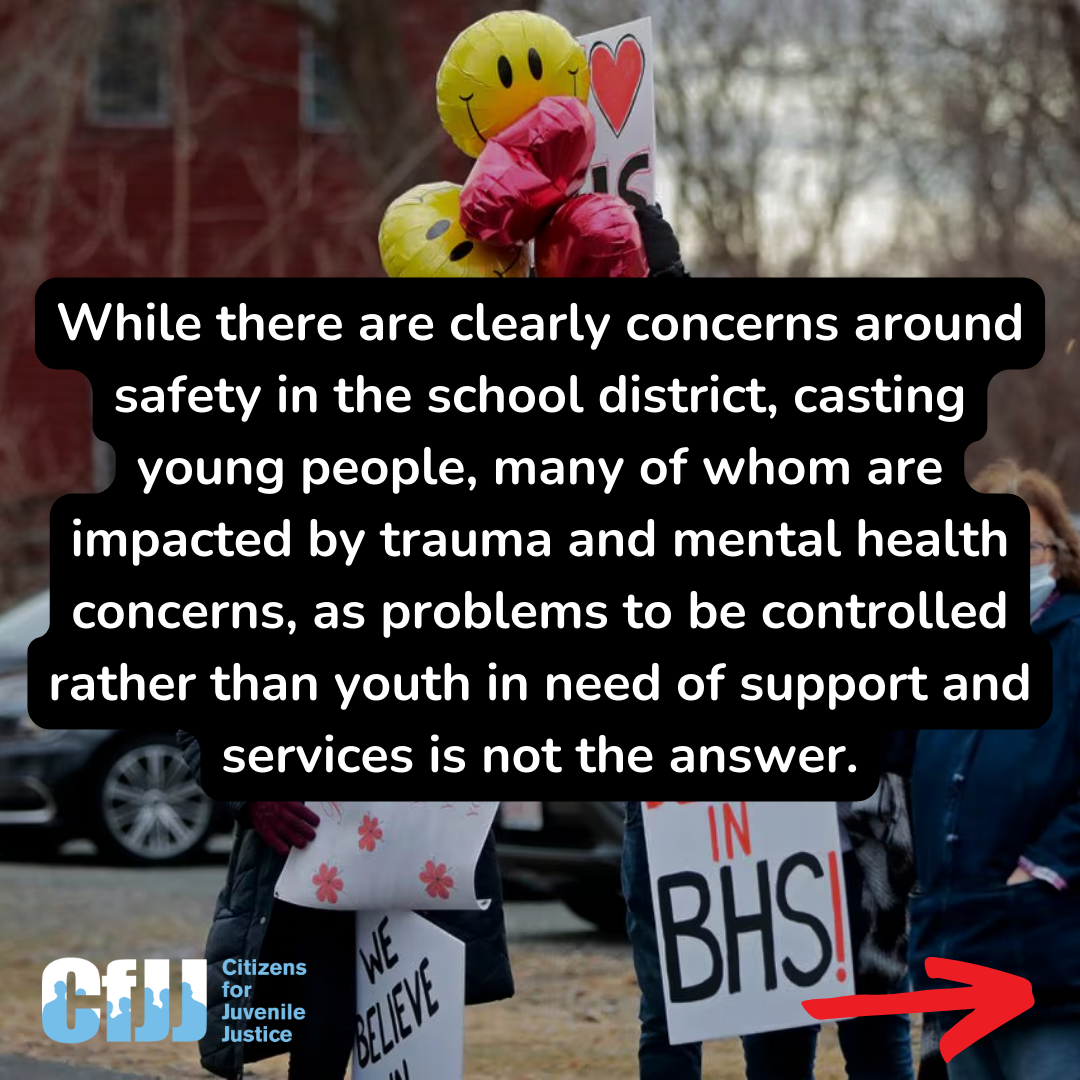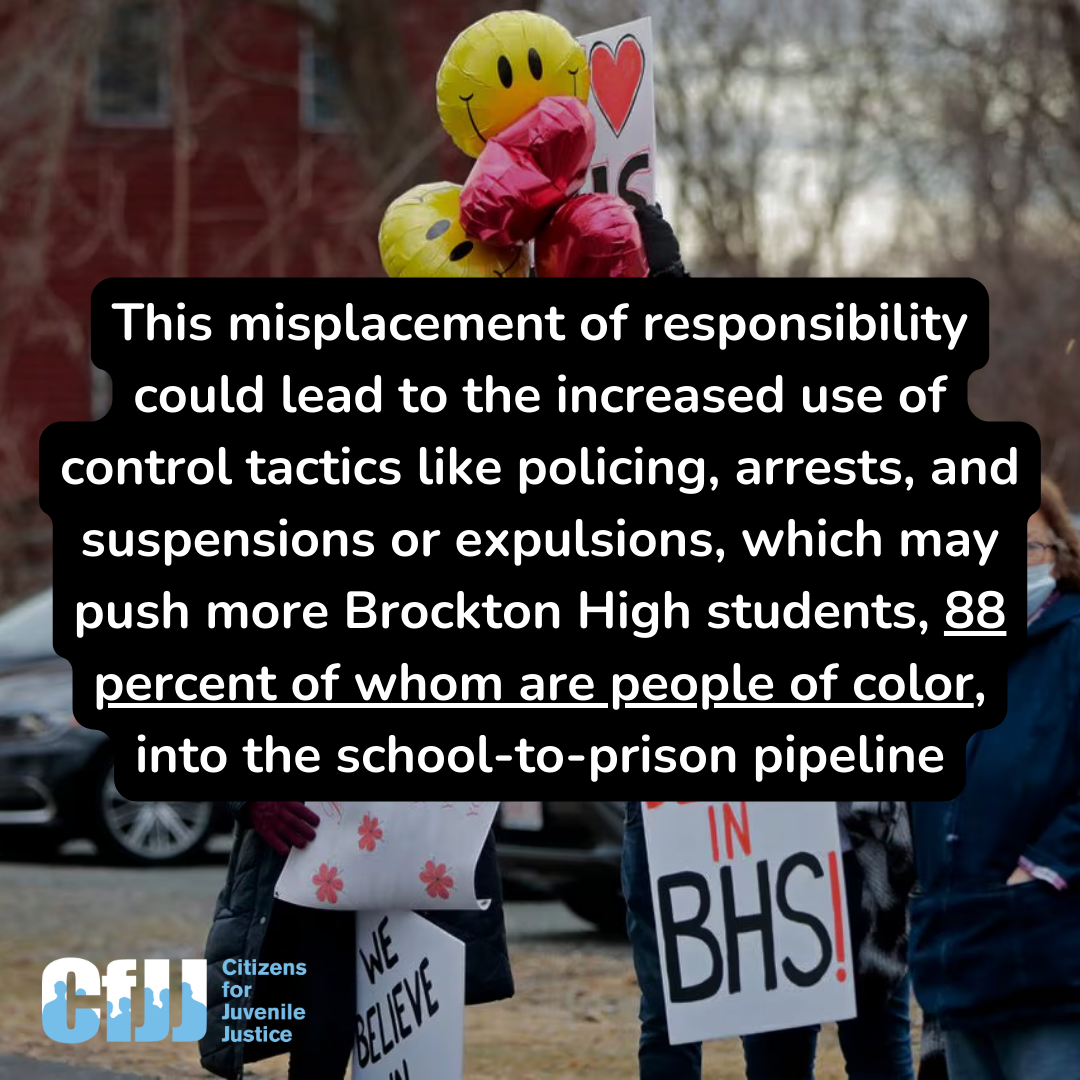Alternative Approaches to School Safety
By: Delaney house, Development and Communications Assistant
March 26, 2024
Pushing for School Hardening Measures Causes Further Harm to Students
Responses to school safety must center students’ needs, opposed to increasing the criminalization of young people
Amid alleged incidents of heightened violence in schools, such as Brockton High School, calls for school hardening measures and zero tolerance approaches fail to honor the needs of struggling students. In early February, Brockton School Committee members requested help from the National Guard in attempting to address escalating violence at Brockton High School. To the relief of many, including students, parents, community members, and faculty of Brockton High who have rallied for alternative approaches, this request to bring in the National Guard was denied by Governor Muara Healy.
The push to militarize Brockton High School is reflective of a misguided tendency emerging across the country that conflates school safety with school hardening measures such as heavy police presence and increased surveillance. Responses of this nature, as pointed out by students, teachers, advocates, and community members, fail to address the root causes of safety challenges and places students at increased risk of negative outcomes. School hardening measures contribute to the criminalization of students, as behaviors that can be handled in a proactive, preventative manner through alternative approaches are instead addressed through suspension, expulsion, or even arrest, all of which are linked with an increased likelihood of dropout and worse outcomes. Removing students from classrooms and their school community, ignoring their underlying needs, and exacerbating fear and trauma is not the solution to school safety.
CfJJ’s Executive Director, Leon Smith and Michael Curry, NAACP National Board member and President & CEO of the Massachusetts League of Community Health Centers, joined WGBH’s Crystal Haynes on “Greater Boston” to discuss alternative ways to address school violence.
Leon Smith points out that school safety is not binary, “School safety isn't at one extreme, hardening your schools and making it all about surveillance, control, and armed people, or chaos.” Despite the tendency to frame increased hardening measures as the only option, Smith asserts, “There is a middle ground to school safety, where students are supported, that when implemented properly, you are able to meet and address student need, you're able to be proactive about safety by being able to de-escalate conflicts before they arise”
Extreme responses like calling on the National Guard fail to address the root of safety issues, and in turn, fail to protect and create a safe environment for students. As explained by Smith, “when you provide the support and services to help young people get better you end up helping and improving your entire school climate”.
Hardening measures focus on punishment and policing students, contributing to a culture of fear and mistrust while increasing young people’s likelihood of becoming system involved. Without addressing the root causes of safety issues, the issues are bound to repeat themselves. Through the implementation of best practices such as trauma sensitive learning models and positive behavioral interventions, schools can better understand and respond to student’s needs, effectively being proactive about safety.
School hardening measures have proven ineffective at improving school safety and can be detrimental to student’s well-being, while the implementation of alternatives that better serve student’s needs have proven successful. Leon Smith cites examples of practices like restorative justice, mediation, and collaborative problem-solving, that when adequately funded, staffed, and implemented with fidelity, decrease incidents of school violence, suspension, and arrest rates, and even increase graduation rates. Smith asserts, “Kids want to go into a school building where they feel their needs can be met, where they feel seen and acknowledged and affirmed by the adults in the building.” This sentiment is echoed by students themselves. Isabela Kafzki, a sophomore at Brockton High School, states…
“It is crucial to listen, collaborate, and act with the community rather than imposing flawed strategies like involving the National Guard or increasing suspensions.”
We have a responsibility to protect our students and to do our best to meet their needs. Situations like that at Brockton High are indicative of failures to meet students’ needs, and these failures will only be exacerbated by the implementation of school hardening measures.
Leon asks, “What message does it convey when the first solution is something extreme like the National Guard? What are you saying about young people?” He continues, “There are young people who have been impacted by trauma, there are young people with mental, behavioral and health issues, who are clearly not being seen. When you advance such an extremist idea as the National Guard you are basically projecting to everyone that these young people are nothing more than problems to be managed, rather than young people still developing who need additional support and services. To me that is where the focus should be.”






